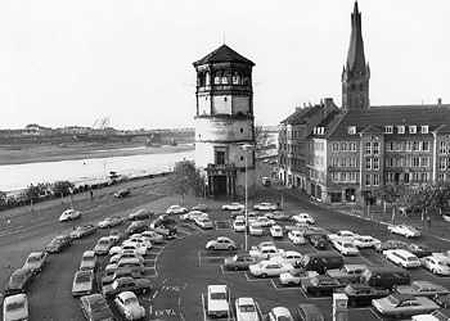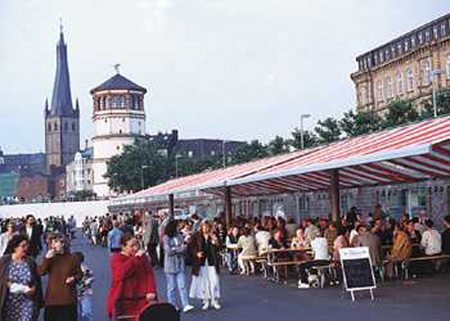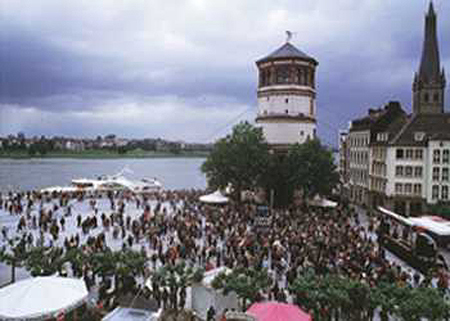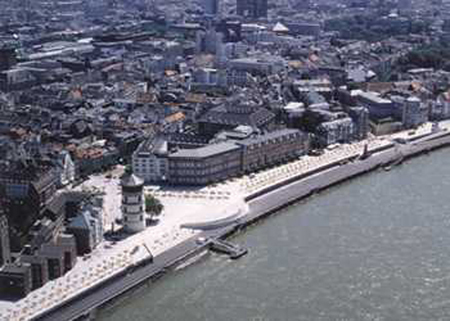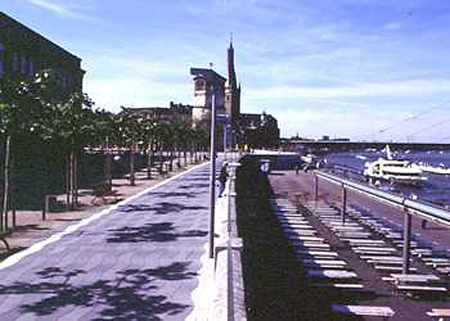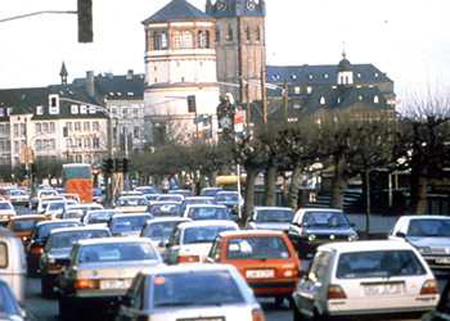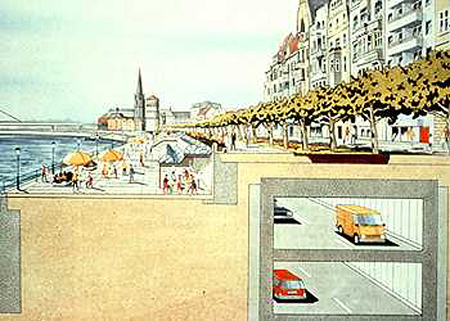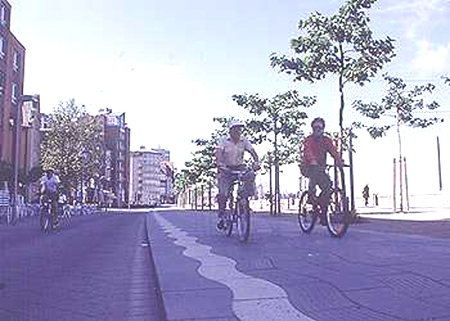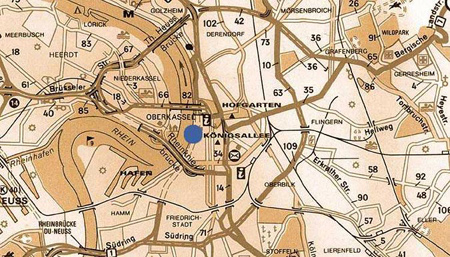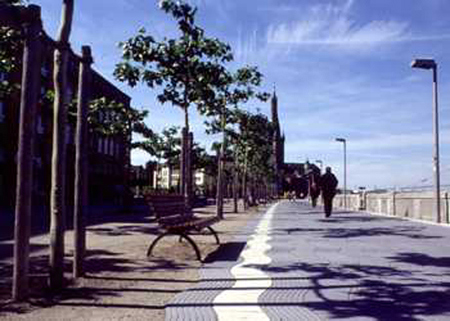Previous state
In 1902, Düsseldorf inaugurated a new riverside promenade which, besides containing the water from the river when it was in spate, was designed to provide the city and its riverside industrial area with a representative boulevard. Nevertheless, the progressive invasion of individual transport in the shape of the car, particularly after 1950, began to affect the historic centre, as land was converted into car parks which began to cut off the city from its river, and converted the promenade by the Rhine into a stretch of federal highway used by 50,000 vehicles a day.This state of affairs led to a decline in the function of the river front as an urban public space and it became the "back" of the city.At the same time, the gradual progression of the city towards its role as the administrative metropolis, and the resulting loss of importance as an industrial centre, meant that a number of areas close to the old quarter were underused. This led to the consideration of new urbanistic uses for this former harbour area.
Aim of the intervention
In the mid-seventies, the decrease in harbour industries linked to a reappraisal of the river front were the conditioning factors of the urban-planning projects envisaged in the area of the Rhine closest to the city centre.The decision taken in 1978 to site the new federal parliament in the port area near the old quarter, and the building of the 234-metre-high communications tower in 1982, were fundamental to the above.
However, the the road infrastructure in the zone needed to be reorganised in order to build the parliament and the park area around it. By the eighties, the need to place a stretch of road by the Rhine underground, running approximately 2,000 metres, had been considered. This would place vehicular traffic underground and free the surface area which had to be designed according to the needs of the inhabitants.
The placing of a major thoroughfare underground meant that the riverside promenade could be regained once again, the course of the river and the landscape of the Lower-Rhine region brought closer to Düsseldorf and noise pollution reduced. Besides designing a traffic-free surface, the placement of the road underground also sought to reduce traffic both in its immediate area as well as throughout the old quarter, where the improvement of the environment for housing was also envisaged.
Description
The requisites to reconvert a surface area of 28 ha. involved the creation of a tunnel which would absorb existing traffic, with a four-lane section running its entire length.The tunnel, besides keeping the surface free of traffic, has very good connections with the local traffic network as it allows a link with the Knie bridge, the parliament area and the large office block in Unterbilk; it also provides access to the undergound car park, which has 950 spaces, beneath the Damm street.
The new promenade stretches from the Oberkasseler bridge to the Tonhalle (concert hall) in the north, and as far as the Rhine Park in the south, where the new parliament is located. Its design is set out on two levels: a lower one in contact with the river, which uses the casemates on the riverside embankments as the location for the outdoor seating areas of the restaurants, and an upper one, on the same level as the old town, with two or three rows of plane trees.
The Burgplatz is located along this stretch, and has regained its original importance as a meeting place where public events are held. It has become the central square for the rest of the city, and has a large stairway which emphasises the tower of the castle.
The project also involved the recovery of the old harbour space (now known as the Schulstrasse) with the rebuilding of the historic bastion, which makes a reference to the old course of the river Düssel. The Rhine Park has been built in the southern part of this new river front; it comprises the new parliament buildings, the WRD (broadcasting station) and the communications tower, and provides an extensive green area stretching from the riverside promenade to the Unterbilk district, which acts as a green lung for this heavily built-up part of the city.
Assessment
In June 1995, the reclaimed promenade opened with a party for the inhabitants who discovered the riverside as a place where they could walk and relax. By bringing the riverside landscape closer to the city, and connecting historical elements, recreated natural ones -the old harbour and the former course of the Düssel- and urbanistic features, a privileged space has been created, not just for the recreation of the city's inhabitants, but also for culture and commerce. In this way, the old quarter, known as a shopping and recreational zone, has also become a lively residential district once again.The intervention has meant that the river front is once again experiencing a new period of resurgence.
[Last update: 02/05/2018]


